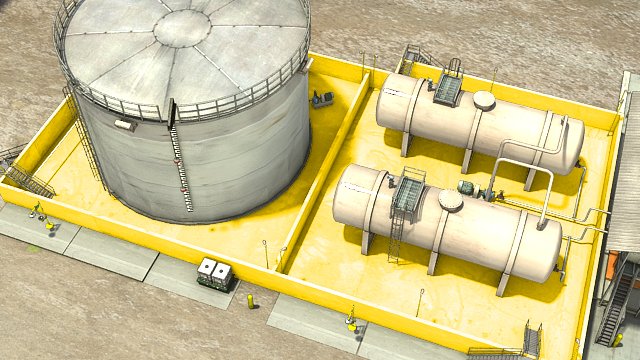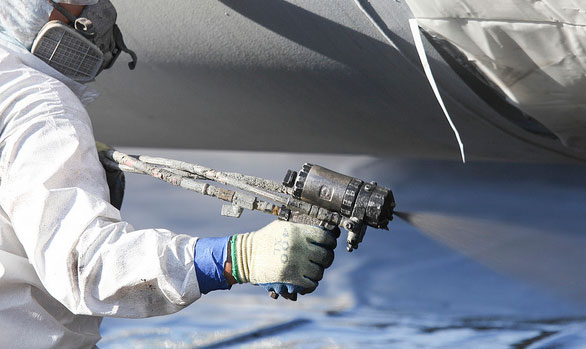
When used for primary or secondary containment, standard coatings have been too inflexible and also not adequately elastic to fit ground, concrete or steel substrate activity. This deficiency can lead to fractures or openings creating in both the substratum as well as the finishes, which can jeopardize containment.
However, the formula of difficult, monolithic, adaptable finishes such as polyurea are currently fixing this concern for professionals, engineers, as well as center managers. When used straight to concrete or steel surface areas, polyurea not only reinforces as well as secures the underlying substratum however can also link voids or cracks of 1/8" or larger.
Moreover, polyurea is currently being pre-applied to geotextile liners that can be quickly turned out in sheets to safeguard a lot more heavily broken surfaces or for use in field applications such as dirt or crushed rock pads at piercing websites. Once set up, applicators require only coat the seams of the liners to develop a monolithic surface area that is ideal for containment.

Containment demands
Whether at refineries, plants, or various other producing facilities, federal and state laws mandate the use of primary and also secondary containment systems to keep poisonous or dangerous substances from escaping right into the ground as well as potentially entering the water system.
Implied in this demand is the understanding that primary containment (commonly by means of a concrete or steel storage space vessel that holds chemicals or fluids) is not fail-safe. Though long lasting, metals rust, concrete splits as well as is permeable also, so will seep fluids if uncoated. This requires secondary containment, which typically takes the kind of concrete pits with barriers set up around the perimeter of a container or other storage space container.
To shield these frameworks, finishings such as epoxies, tars, and also polyurethanes are commonly used as an extra obstacle of protection. Nonetheless, these typical coverings are often stringent when healed and can fracture along with the concrete.
" Typical coatings do not hold up well to substrate motion or daily, seasonal, or process-related thermal growth as well as tightening, which can lead to splits as well as leaks," says Jim Collins, co-owner of South Penn Resources, a business that produces containment systems in the Pennsylvania region.
After substantial research study and testing, Collins says he counted on a sophisticated polyurea system from VersaFlex, a producer of spray applied polyurea for primary and also secondary containment.
When applied to substrates such as concrete or steel, the spray-applied water-proof finishing develops a resilient, seamless, versatile, protective obstacle that stops leaks as well as enhances the stability of primary as well as secondary containment systems. The finish exhibits exceptional physical residential properties such as solidity, tensile toughness, as well as crack connecting as well as elongation up to 400%, to produce a robust, industrial-grade safety cellular lining.
" Polyurea can bridge fractures as well as flex at a rate similar to concrete and also steel," claims Collins. "This not just assists it last but also secures the concrete so it does not soak up contaminants if there is a spill inside the included area."
When contrasted to traditional coverings, Collins additionally values the quick return to service feasible when spraying the polyurea system for containment.
While conventional finishings such as cementitious, epoxies, tars, and also polyurethanes will too soon fail otherwise set up under a fairly slim range of temperatures, polyurea is developed for installment as well as use from -40 ° F to +350 ° F. It sets and also cures rapidly as well as will certainly withstand years of freeze-thaw biking, as well as broad variations of temperature level and also moisture.
" After splashing the polyurea, return to solution is almost instant, which can make a huge difference in reducing manufacturing downtime," claims Collins. "We covered about 8,000 sq. ft. of concrete in 12 truck-offloading areas that required drive-in containment with VersaFlex polyurea. Within mins of spray application, vehicles were safely driving across it."
Write-up Included Image
Quick, reliable containment in the field
Although spraying polyurea straight to the substratum has lots of advantages, for containment over soil, gravel, or even concrete that is as well damaged to be efficiently restored, pre-sprayed composite panels offer exceptional protection.
This solution is particularly matched to area applications that should have the ability to withstand heavy traffic from trucks filling or unloading materials. Although plastic linings that are seam-welded together are frequently made use of for such applications, they are much more quickly penetrated and can bunch up under hefty use.
" For primary containment at oil area piercing websites, we utilized to place different plastic systems on the well pads, however we relocated away from that since plastic was not sturdy enough," states Collins.
Fixing plastic liners also provides a problem at the seams, when damaged locations are removed and also brand-new sections welded in, says Collins. "The result is a patchwork liner with seams that are prone to failing due to incorrect welding too," he claims.
As a solution, Collins counted on geotextiles with pre-applied polyurea for its substantial benefits in resilience and reusability.
" Polyurea products are a lot a lot more resilient than plastics for containment systems," says Collins. "When needed, we can personalized apply more polyurea millage to geotextile panels and berms to accommodate also the heaviest vehicle use as well as vehicle misuse."
To validate the stamina of the polyurea finish on containment mats and berms, actually, Collins performed a variety of examinations.
" I ran an 11,000 pound skid loader onto a containment floor covering, stood the forks straight up and also tried to penetrate it - yet it did not penetrate with," says Collins, that placed the examination video clip on South Penn Resources' web site. "We additionally ran 6,044 fully loaded water vehicles throughout a containment system and also it withstood it with absolutely no holes and also no concession to the liner."

Collins debts both the toughness of the VersaFlex polyurea along with its extensive recoating home window for the ability of his company to extensively reuse its containment systems.
" To reuse a containment system, we'll suffice up right into rolls, roll it up and move it. Then we'll take it back out, respray particular locations, and re-install the initial containment system at an additional area," discusses Collins.
To develop the most durable, smooth, and also reusable containment mats as well as berms, Collins sought to determine the very best polyurea for the application.
" Some polyureas look fine the very first time you spray it, however the prep work required to obtain any kind of seams to bond for reuse can be challenging," claims Collins. "However, we have actually located the extended open window for recoat and also fixing of the VF380 polyurea permits us to conveniently cut out any damaged section of geotextile, put a new item in, and spray the joints to make it practically seamless once more. We improve repair and more reuse out of our containment systems."












Post a Comment
Note: Only a member of this blog may post a comment.